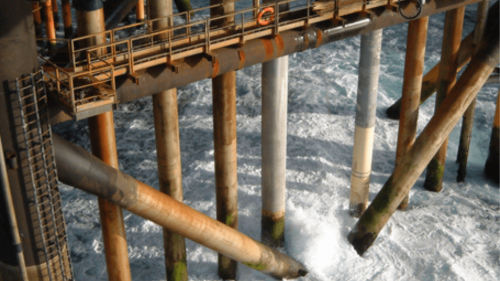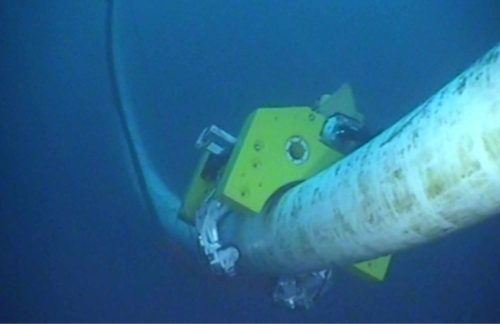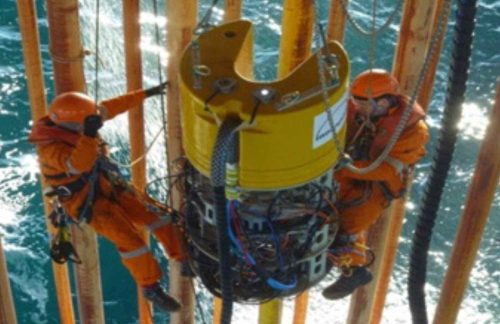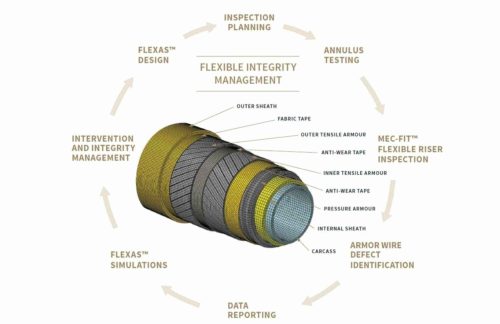The complex layer structure of flexible risers and flexible pipes corresponds to integrity evaluation challenges, especially at the various wire layers under various tensional stress levels. There is a market demand for a technology able to deliver an external inspection of the flexible risers and pipes in-situ with visibility of the multiple wire layers including those on the far side but without the risk of damaging the integrity of the flexible risers and pipes through annulus flooding with a couplant.

Flexible Risers & Umbilicals
Capabilities
The MEC-FIT™ flexible riser inspection technique is a dynamic fast scanning technique based on magnetic and Eddy Current field induction and the analysis of the field changes due to flaws in the wires.

- No annulus flooding with a couplant is required for the inspection.
- Ability to inspect through flooded and non-flooded layers.
- Enables the selection of the flexible riser layers to be inspected as well as the optimisation of inspection for a specific layer from which a defect signal is received.
- Fast external scanning in axial direction for wire structure angle <37° and circumferential direction for wire structure angle >37°.
- Deeper penetration into the various layers to detect single or multiple wire damage in up to 3 metallic layers, localised defects like cracks, pitting and corrosion in the single and multiple wires and wire misalignment and wire gaps.
Equipment
The fleet of sophisticated MEC-Hug Crawlers are designed and built to deploy the MEC-FIT™ technique onto the flexible risers and flexible pipes to perform the in-situ inspection at their working locations.
The advanced reporting software utilises a combination of comprehensive C-Scan mapping, individual defect sizing analysis and matrix data to provide a reliable and extensive condition assessment.

- Deployable by rope access personnel from topside, divers or via work-class / inspection-class ROV from the support vessels
- Capable of self-crawling along the surface of the flexible assets with various degrees of wire structure angle to perform the axial and/or circumferential scanning.
- Ability to remain in stable contact with the inspection surface despite the turbulences and waves due to its integral buoyancy and magnetic system.
- Signal data is transferred in real time via the umbilical to the inspection computer located on the installation or support vessel to provide instantaneous inspection results.
FlexIQ

FlexIQ is a unique offering from INTECSEA and Innospection that redefines the industry’s approach to flexible riser integrity management.
FlexIQ offers the best in class inspection and computational simulation by combining the state-of-the-art and proprietary inspection capabilities of MEC-FIT™ and the numerical simulation capabilities of FLEXAS™.
FLEXAS™ is a dynamic riser simulation using detailed and multi-layered finite element models resulting in increased accuracy for fatigue life prediction. It has been qualified by DeepStar and ExxonMobil in independent validations against numerical and experimental benchmarks and is considered the leading flexible riser simulation capability by Subject Matter Experts (SMEs) at multiple major operators.
By combining these capabilities with industry-leading annulus testing and a formal risk-based approach to flexible riser risk assessment and life extension, FlexIQ delivers all aspects of flexible integrity management through a single provider.
The bottom line is: FlexIQ delivers insight, not just data.
